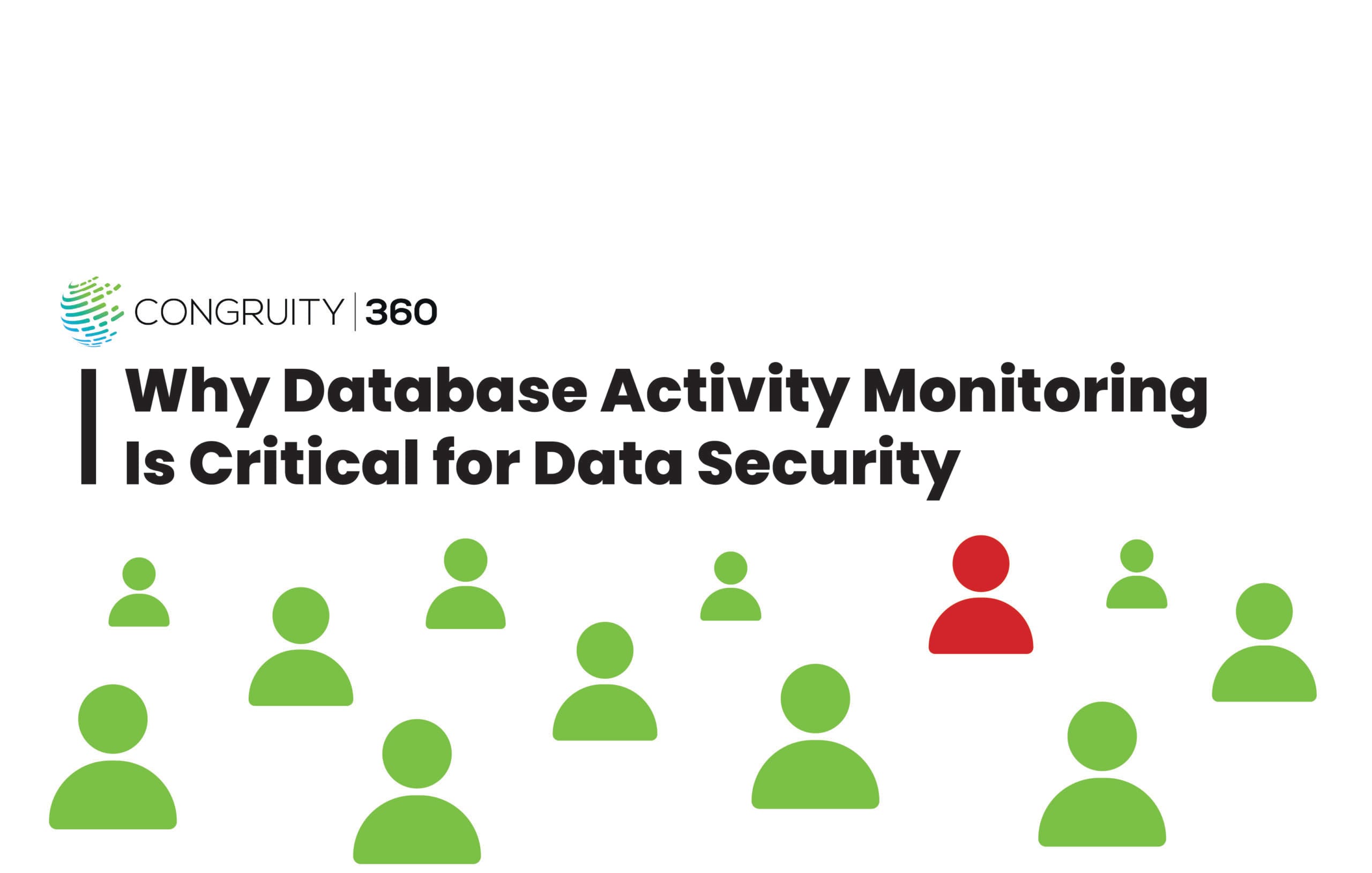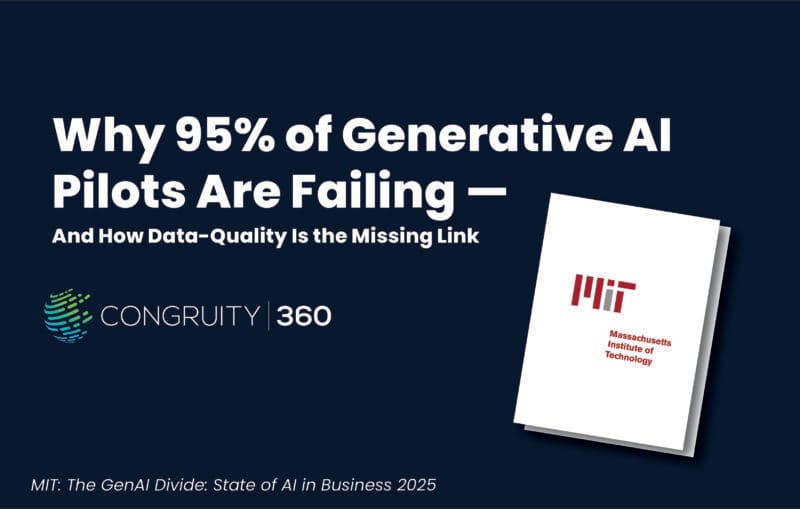Database activity monitoring is critical for data security because it provides real-time visibility into who is accessing what data and when, enabling organizations to detect threats immediately and maintain regulatory compliance. By continuously tracking database interactions, businesses can identify suspicious behavior, prevent unauthorized access, and respond to potential breaches before they escalate into costly incidents.
If you’ve been feeling unsure about what’s happening behind the scenes in your organization’s databases, rest assured that monitoring can offer the clarity you need. The challenge isn’t just knowing that someone accessed your database—it’s understanding whether they accessed sensitive customer records, financial data, or routine operational information. This context makes all the difference in determining the severity of a potential security incident.
Understanding sensitive data in context is key to mitigating potential breaches. Traditional database activity monitoring (DAM) solutions capture extensive logs of user interactions, but without data classification, security teams struggle to prioritize alerts and focus on genuine threats. This is where solutions like Congruity360’s classification engine prove invaluable, transforming raw activity logs into actionable intelligence.
Identify your top database risks now to learn more about maintaining a robust data security posture and take the first step toward comprehensive database protection.
Understanding Real-Time Database Activity Monitoring
Real-time database activity monitoring involves continuously tracking all user interactions, queries, and operations within your database environment. Unlike periodic security scans or retrospective audits, real-time monitoring provides immediate insights into database activities as they occur, setting the foundation for fast threat detection and response.
Lack of visibility can lead to fear of missing anomalies—real-time monitoring helps conquer that worry. When security teams can see database activities unfold in real time, they gain the confidence to respond decisively to potential threats rather than discovering incidents days or weeks after they occur.
How Real-Time Alerts Can Prevent Costly Breaches
Real-time alerts form the backbone of proactive database security, transforming passive monitoring into active threat prevention. When suspicious activity occurs—such as unauthorized login attempts outside normal business hours or unusual query patterns targeting sensitive tables—immediate notifications enable security teams to investigate and respond within minutes rather than hours or days.
Consider a scenario where an employee’s credentials are compromised, and an attacker attempts to access customer payment information at 2 AM. Traditional security measures might not catch this until the next scheduled audit, potentially allowing the attacker to exfiltrate thousands of records. Real-time monitoring, however, would immediately flag this unusual access pattern, enabling security teams to lock down the account and investigate before any data is compromised.
Another common scenario involves insider threats, where authorized users exceed their normal access patterns. For example, a database administrator who typically accesses system configuration tables suddenly begins querying customer databases containing personally identifiable information (PII). Real-time alerts would immediately notify security teams of this anomalous behavior, allowing for swift intervention.
Reflect on the possible compliance fines or reputational damage that could be avoided with swift alerts. The average cost of a data breach in 2023 reached $4.45 million according to IBM’s Cost of a Data Breach Report, with detection and escalation accounting for a significant portion of these costs. Organizations with advanced threat detection capabilities contained breaches 200 days faster than those without, resulting in $1.76 million lower breach costs.
Set up your first database alerts and explore strategies for protecting sensitive information before threats become incidents.
Contextualizing Activity with Data Classification
The transition from visibility to actionable intelligence requires more than just monitoring database activity—it demands understanding the sensitivity and business value of the data being accessed. This is where data classification becomes essential, transforming overwhelming volumes of alerts into prioritized, manageable security intelligence.
By classifying and ranking data by sensitivity, you reduce false positives and direct energy toward genuine threats. When your monitoring system understands that a user accessed a table containing credit card numbers versus a table with public product information, it can appropriately escalate the former while deprioritizing the latter. This contextual awareness prevents alert fatigue and ensures security teams focus on activities that pose real risks to your organization.
Congruity360’s classification engine empowers security teams by automatically identifying and categorizing sensitive data across your database environment. The system recognizes patterns consistent with PII, payment card information, healthcare records, and other regulated data types, then enriches monitoring alerts with this crucial context. This integration means that when unusual database activity occurs, security teams immediately understand not just what happened, but whether it involves data that could trigger regulatory violations or competitive damage.
Integrating Classification for Effective Forensic Investigations
When security incidents occur, the speed and accuracy of forensic investigations often determine the difference between a contained incident and a full-scale breach. Layering classification data onto activity logs dramatically narrows the scope for post-incident review, enabling investigators to focus immediately on the most critical compromised records.
Consider a scenario where investigation reveals that 10,000 database records were accessed during a security incident. Without classification data, forensic teams would need to manually review each accessed table to determine which records contain sensitive information, a process that could take days or weeks. With integrated classification, investigators immediately know that 500 of those records contained customer Social Security numbers, 200 contained payment card data, and the remaining 9,300 contained non-sensitive operational data.
This targeted approach extends beyond initial investigation. During breach notification processes, organizations must quickly determine which customers, regulators, and partners need immediate notification. Classification data provides this information instantly, enabling compliance teams to meet strict notification deadlines while providing accurate information about the types of data potentially compromised.
The operational savings and compliance gains from shortlisting sensitive records first cannot be overstated. Organizations facing breach notification requirements under GDPR, CCPA, or industry-specific regulations like HIPAA often have just 72 hours to notify regulators and affected individuals. With classified data readily identified, legal and compliance teams can focus on notification and remediation rather than spending precious time determining what data was actually at risk.
Discover advanced GRC solutions and discover governance, risk, and compliance solutions that transform security monitoring from reactive to proactive.
Choosing and Integrating the Right Solutions
Effective database security monitoring requires seamless integration into your existing technology infrastructure. You don’t have to overhaul your entire infrastructure—refined solutions fit into your current environment without adding complexity. The key lies in selecting platforms that enhance rather than replace your current security investments.
Modern database activity monitoring solutions are designed with integration in mind, offering APIs, connectors, and pre-built integrations with popular security information and event management (SIEM) platforms, database management systems, and cloud environments. This compatibility ensures that implementing comprehensive monitoring doesn’t require months of complex deployment or extensive staff retraining.
Steps to Achieve Comprehensive Compliance
Achieving robust compliance through database monitoring involves several strategic steps that build upon each other to create a comprehensive security posture:
- Implement role-based access controls: Establish granular permissions that limit database access based on job responsibilities, ensuring users can only access data necessary for their specific roles. This foundational step reduces the attack surface and makes anomalous behavior easier to detect.
- Log database entries for auditing: Configure comprehensive logging that captures not just successful database operations, but also failed attempts, permission changes, and administrative activities. These detailed logs provide the evidence trail necessary for compliance audits and forensic investigations.
- Merge logs with classification outputs for targeted compliance reports: Integrate activity logs with data classification results to generate reports that focus on sensitive data access patterns. This combination enables automated compliance reporting that highlights activities most relevant to regulatory requirements.
Consider the legal ramifications of non-compliance, alongside the reassurance that integrated solutions address these issues proactively. Organizations subject to HIPAA face fines ranging from $100 to $50,000 per violation, with annual maximums reaching $1.5 million. PCI DSS violations can result in fines up to $100,000 per month until compliance is achieved. These penalties underscore the financial importance of robust database monitoring and classification systems.
Strengthen your compliance approach and understand the essentials of HIPAA compliance and other regulatory frameworks that impact your organization.
Transform Database Security with Intelligent Monitoring
Real-time monitoring, paired with accurate data classification, forms a powerful defense against breaches and compliance pitfalls. This combination transforms traditional reactive security approaches into proactive threat prevention systems that provide both immediate protection and long-term strategic value. Organizations implementing these integrated approaches report significant improvements in incident response times, compliance posture, and overall security confidence.
The evolution from basic database logging to intelligent, classified monitoring represents more than a technological upgrade—it represents a fundamental shift in how organizations understand and protect their most valuable digital assets. When monitoring systems understand not just what activities occur, but the business and regulatory significance of those activities, they become strategic tools for risk management rather than simply operational necessities.
When you can instantly see and classify what’s happening, you’re equipped to act decisively. This clarity eliminates the uncertainty that paralyzes security teams during potential incidents, replacing reactive scrambling with confident, informed responses. The peace of mind that comes from knowing your monitoring systems can distinguish between routine operations and genuine threats enables organizations to focus on strategic growth rather than constant security concerns.
Ready to elevate your monitoring? Take the next step by reviewing your data policies and get insights into classifying sensitive data that will transform your database security from a necessary overhead into a competitive advantage.





